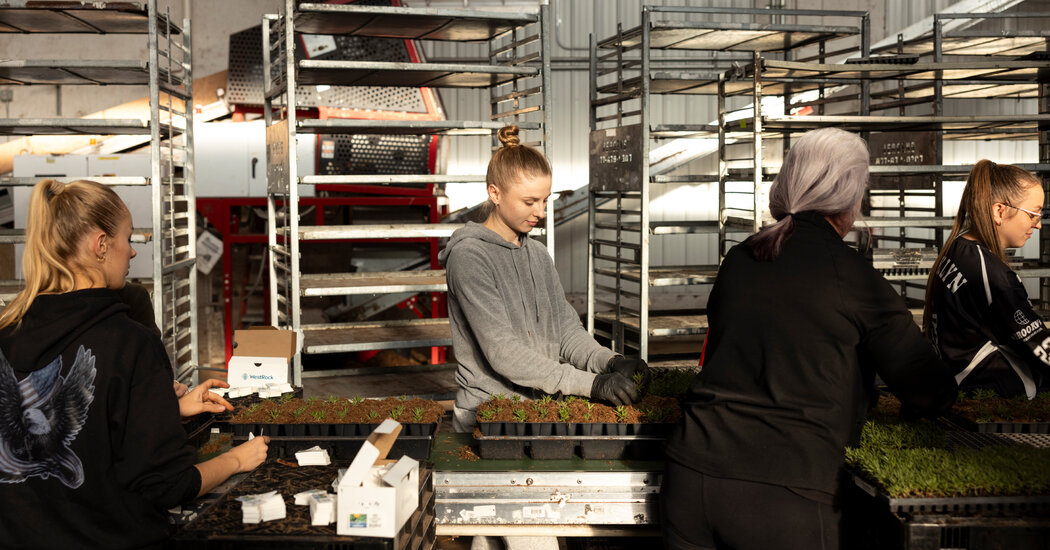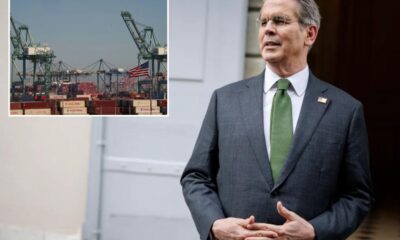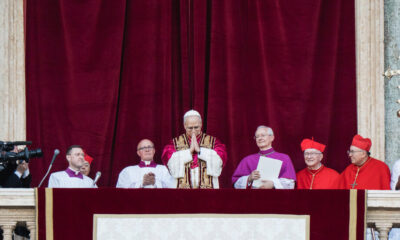Breaking News
As Trump’s Tariffs Stoke Economic Uncertainty, the Fed Debates Its Next Steps

Chris Bergen, who operates a commercial greenhouse business in northern Minnesota, is feeling cautious about expanding his business two months into President Trump’s second term. Uncertainty surrounding the administration’s trade and immigration policies has made him more hesitant about any growth plans.
As one of the largest producers of bedding plants, perennials, and other flowers in the country, Bergen’s Greenhouses is facing challenges on multiple fronts.
The business imports over six million pounds of peat moss from Manitoba every June, but suppliers are hesitant to provide quotes due to uncertainty over tariffs. Additionally, tariffs on plastic flower pots imported from China could further impact the company’s margins. Bergen is also concerned about finding workers if immigration policies change and affect the program that provides temporary visas to many of the company’s agricultural workers.
“We’re being cautious in our approach,” said Mr. Bergen, whose family has been running the business for over a century.
This caution is a major concern for the Federal Reserve, which is navigating a challenging economic landscape with little precedent. The central bank is closely monitoring the economy as it considers whether to lower interest rates with inflation still higher than desired. Businesses are warning of potential price increases and slower growth, although these effects have not yet fully materialized in the economic data.
The regional presidents at the central bank are closely engaging with businesses in their districts to gain insights into evolving economic conditions, especially given the wide range of possible outcomes.
Neel Kashkari, president of the Minneapolis Fed, emphasized the importance of these conversations with businesses to decipher the signals amidst the noise in the economy.
During a recent visit to Detroit Lakes, Minn., Mr. Kashkari heard from Mr. Bergen and other business owners expressing concerns about inflation, slowing growth, and high interest rates.
In Manchester, N.H., Susan M. Collins, president of the Boston Fed, also encountered similar fears among business leaders.
Melissa Florio, president of Ambix Manufacturing, shared her concerns with Ms. Collins. Rising costs and reduced orders from customers, coupled with potential tariffs, are posing challenges for the company. The uncertainty has led to worries about a possible recession.
The Fed is grappling with understanding how President Trump’s policies might impact inflation and economic growth, with the need to balance stable prices and low unemployment.
Ms. Collins acknowledged the challenges of navigating uncertain economic conditions and the complexities of monetary policy.
‘Hard’ vs. ‘Soft’ Data
Despite challenges, the U.S. economy has shown resilience in the face of uncertainty. However, concerns have resurfaced due to President Trump’s policies and their impact on tariffs and economic plans.
While quantitative indicators suggest a strong economy, survey-based measures indicate pessimism among consumers.
Consumers are showing restraint in spending, but employment rates remain stable. Survey-based sentiment indicators point to concerns about future economic conditions.
The Fed is closely monitoring these shifts in consumer sentiment to understand the evolving economic landscape.
Businesses are delaying investments and hiring decisions due to uncertainty surrounding the administration’s policies.
Dynamic Homes and Foltz Trucking are among the companies facing challenges and tough decisions in the current economic climate.
Casey Mittag at Foltz Trucking is considering strategic decisions to navigate the impact of tariffs, while Velcro is exploring options to mitigate potential tariff effects.
Business leaders like Melissa Florio are holding back on major expenses until there is more clarity in the economic landscape.
Stagflationary Shock?
The Fed’s response to the current situation would be different if inflationary pressures were not a concern.
The central bank’s approach to managing tariffs and their impact on inflation and growth is crucial in the current economic environment.
The Fed faces tough decisions on balancing inflation and economic growth amidst uncertainty in the economic landscape.
Economists and experts are anticipating challenges in the economy due to various factors, including tariffs and inflationary pressures.
The Fed’s response will be influenced by evolving inflation expectations and their impact on economic growth.
Balancing inflation and economic growth will be a key priority for the Fed in the coming months.
-

 Destination8 months ago
Destination8 months agoSingapore Airlines CEO set to join board of Air India, BA News, BA
-

 Breaking News10 months ago
Breaking News10 months agoCroatia to reintroduce compulsory military draft as regional tensions soar
-

 Gadgets3 months ago
Gadgets3 months agoSupernatural Season 16 Revival News, Cast, Plot and Release Date
-

 Tech News12 months ago
Tech News12 months agoBangladeshi police agents accused of selling citizens’ personal information on Telegram
-

 Productivity11 months ago
Productivity11 months agoHow Your Contact Center Can Become A Customer Engagement Center
-

 Gadgets4 weeks ago
Gadgets4 weeks agoFallout Season 2 Potential Release Date, Cast, Plot and News
-

 Breaking News10 months ago
Breaking News10 months agoBangladesh crisis: Refaat Ahmed sworn in as Bangladesh’s new chief justice
-

 Toys12 months ago
Toys12 months ago15 of the Best Trike & Tricycles Mums Recommend























